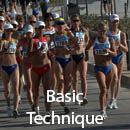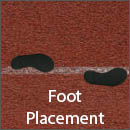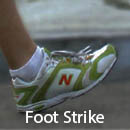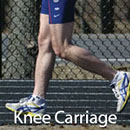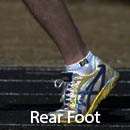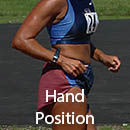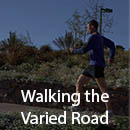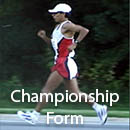Race Walking Technique
Walking the Varied Road
The techniques presented in this section begin with a big assumption: that you are walking on level terrain. While race walking competitions are rarely held on courses with a significant hill, training walks surely lead you to encounter a hill at one time or another.
Hills
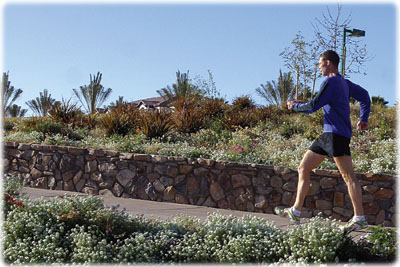 How many times have you race walked on a hill that never seemed to end? This phenomenon is especially true if you walk on the same hill more than once in a workout or race. One of the reasons walkers have trouble with hills is that they face a much more difficult challenge in trying to maintain proper form uphill than do runners or health walkers. While most walkers view a hill as similar to another word that varies from hill by only one vowel, learning to walk properly on a steep grade minimizes the pain associated with it.
How many times have you race walked on a hill that never seemed to end? This phenomenon is especially true if you walk on the same hill more than once in a workout or race. One of the reasons walkers have trouble with hills is that they face a much more difficult challenge in trying to maintain proper form uphill than do runners or health walkers. While most walkers view a hill as similar to another word that varies from hill by only one vowel, learning to walk properly on a steep grade minimizes the pain associated with it.
Pacing yourself as you “climb” involves strategy. Most people attack up a hill—trying to maintain speed—then relax on the downhill. But if you maintain effort instead of pace, you reach the top of the hill more refreshed. As an added benefit, by not relaxing on the downhill, you walk away from the hill with more speed. I like to think of walking on a hill as analogous to an old car’s cruise control. Unlike today’s modern cars that maintain an exact speed, older cars maintained a constant gas level. Therefore, as you traveled up the hill, you slowed down, and as you traveled down the hill, you accelerated. Like an old car’s cruise control, a race walker gains efficiency by maintaining constant effort.
Uphill
Race walking uphill requires slightly different technique than walking on a level surface or downhill. Imagine yourself as a bicycle rider in lowest gear. Bike riders spin their wheels in small gears without great resistance. To get the same effect, shorten your stride. A shorter stride reduces the effort required per step, which helps to counteract the extra effort needed to climb the hill. Also, don’t worry about pushing off with your toes as you would on flat ground. The effort would just be sent in the vertical direction. Instead, try to increase the cadence of your legs to compensate for the shorter stride. The faster tempo will assist with maintaining a speed closer to your norm.Downhill
Once you hit the crest of the hill and head down, you need to shift gears. Elongate your stride, emphasize the hips, and decrease turnover rate. Exploiting hip flexibility, let gravity be your friend and pull you down the hill. For an added surge of speed, allow your swinging leg to attack the ground in front of you. While the braking action mentioned previously slows you down when you overstride, the angle caused by walking downhill counterbalances most of this action.

A final note of caution: if a hill is too steep for you to maintain proper technique comfortably, either jog or health walk down the hill. Remember, race walk competitions do not include sharp hills.
![]()

